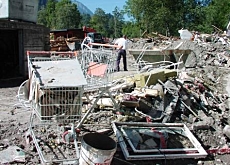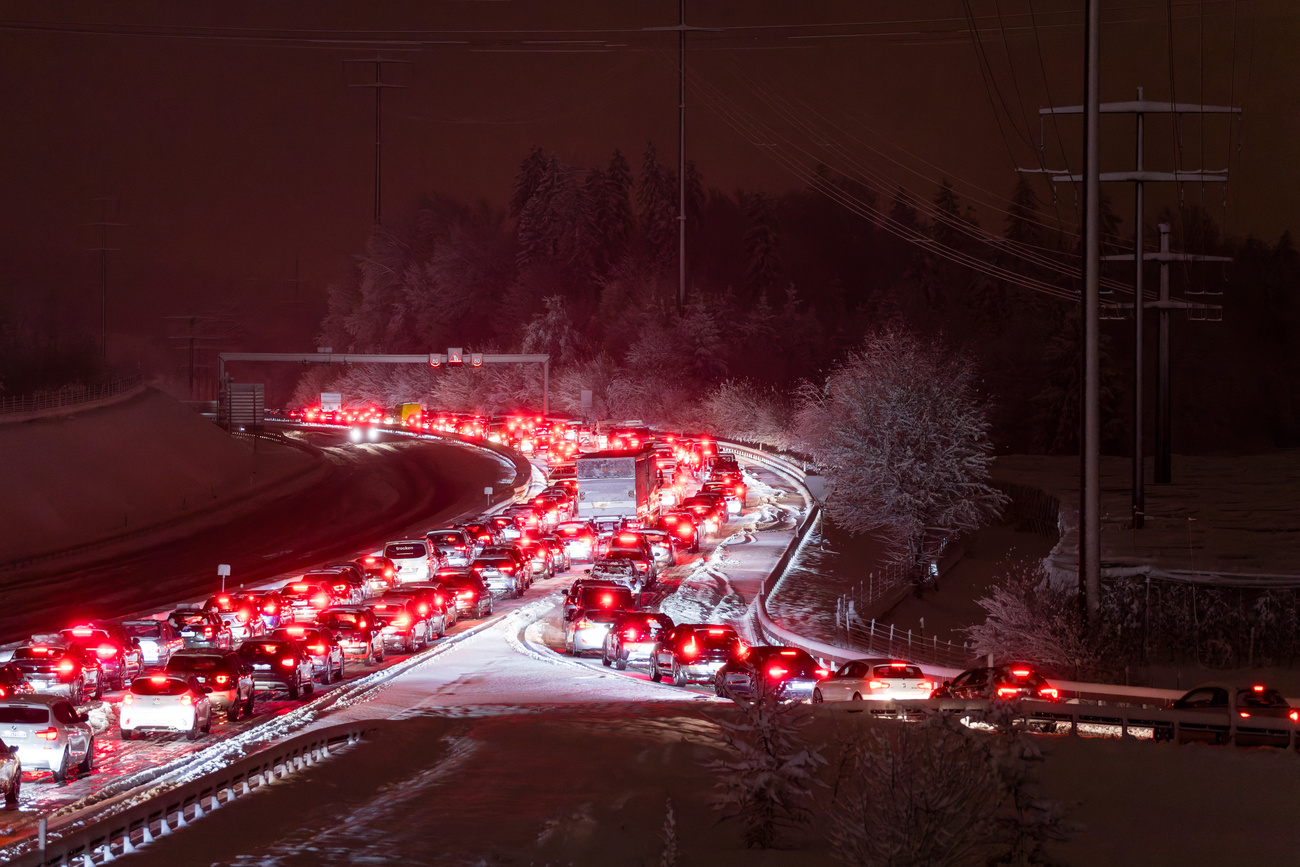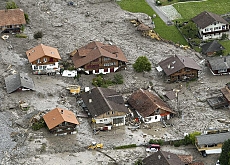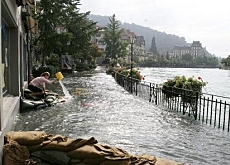Drawing the lessons of August’s floods

Normality has returned to Switzerland one month after large areas were affected by flooding, but the most important lessons are still being learned.
The floods and landslides caused by torrential rains swamped homes and destroyed roads and railway lines, cutting many villages off from the outside world.
Pictures of helicopters plucking people from rooftops and houses buried in mud went round the world. In total, six people died.
A few of the worst hit villages are still digging out and it will be weeks, and in some cases months, before all the roads and railway lines are repaired.
The total damage to the economy has been estimated at up to SFr2 billion ($1.59 billion), including the loss in revenue to the tourist industry, where cancellations and a significant drop in bookings did far more damage than the flooding.
It prompted the national tourist board, Switzerland Tourism, to launch an expensive advertising campaign last week to woo back holidaymakers.
But the State Secretariat for Economic Affairs, as part of its latest report on the state of the Swiss economy released two weeks ago, said the flood damage did little to dampen growth.
It said reconstruction expenditure would more than make up for any negative consequences.
Prevention
Since the floodwaters subsided, the debate has focused on improving prevention in a country that has experienced not one but two floods “of the century” in the space of six years.
An expert on flood-control policy, Marc Zaugg at Zurich University, told swissinfo that bureaucratic hurdles and conflicting interests stand in the way of effective prevention measures.
Two of the main topics of discussion are the widening of riverbeds and the completion of risk maps to highlight vulnerable areas, which can also influence zoning laws.
Zaugg said all three tiers of government must do a better job coordinating policy.
“The federal government is trying to provide the right direction by creating framework laws, but it is the cantons that have to implement the laws,” he added.
He said local councils also have a say in the matter since they are obliged to cover part of the costs and are responsible for the maintenance of waterways.
Paralysis
The paralysis that this system of government can produce was most evident after the River Aare caused large-scale damage to the towns of Bern and Thun last month. The municipal and cantonal authorities took turns blaming each other for not doing enough since the last major flood in 1999.
Last week, the Bern cantonal government and the 18 affected communities on the banks of the Aare presented a more united front, vowing to work closely together to prevent a repeat of the disaster.
There has also been a new sense of urgency to complete the risk maps and to improve early warning systems.
Stephan Vogt, a hydrologist at the Federal Office for Water and Geology, said a new early-warning model which records data, including precipitation, water-flow rates and temperature, should be ready for use by the middle of next year.
swissinfo, Dale Bechtel
Four days of heavy rainfall beginning on August 22 led to flooding and landslides in many parts of the country.
The damage to the economy has been estimated at up to SFr2 billion.
The cantons worst hit were Bern, particularly towns and villages in the Bernese Alps, and those of central Switzerland.

In compliance with the JTI standards
More: SWI swissinfo.ch certified by the Journalism Trust Initiative












You can find an overview of ongoing debates with our journalists here . Please join us!
If you want to start a conversation about a topic raised in this article or want to report factual errors, email us at english@swissinfo.ch.